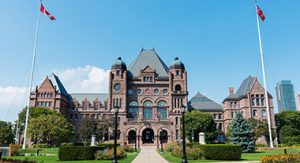
October 2016
In April 2015, Toronto Condo News published Bill 39 – An Attack on Condo Owners; Are Condo Buildings Ready for Affordable Housing Quotas?
This bill seeks to blend home ownership with affordable housing at the expense of condo owners. The issue identified in the article is that the Condo Act does not adequately protect condo owners from renters who may be disruptive or choose not to comply with condo rules. Bill 39 would allow the city to exert greater control over the composition of residential condo buildings. It could have a negative impact on condo living, increase the monthly fees of condo owners and increase the likelihood of condo corporations experiencing financial difficulties. This bill would grant municipalities the right to require condo developments to become mixed communities blending private home ownership with affordable housing which may include rental or not-for-profit housing.
The reported experiences of those residing at 33 Eastmount Ave. may soon apply to condo buildings. A few years ago some apartments were converted to low income housing units. Presumably, there was financial compensation as part of the conversion.
Tenants report changes since this conversion that negatively impact on their safety, security and lifestyle.
- Increased loitering in common areas affecting comfort, safety and security
- Emotionally disturbed people wandering throughout common areas of the building
- Increased vandalism in common areas, parking garage and elevators
- Disorderly behaviour in the swimming pool; unsafe conditions including running from the pool area to elevators and wet common area floors
- Break & enters in suites and locker area, rare prior to the change, are more common – security cameras had to be installed
- Theft from vehicles, virtually non-existent prior to the conversion, are now common
The story of a failed luxury condo building in New York City presents another example. The project received $7.6 million in subsidies and $28 million in construction loans from the city. The project was completed with 108 of the units being income restricted or rent-stabilized with rents as low as $1,103 per month.
Rent protected residents complained of having to access the building through what was called a “poor door” – a separate entrance for lower income tenants residing in costly condo buildings.
Larger balconies in rent-stabilized suites were blocked off by wire because purchased suites had smaller balconies.
The building was part of a New York City program designed to convert stalled condo sites into affordable housing. The city is now looking into banning separate entrances for subsidized housing that have come to be known as “poor doors”.
Toronto condo corporations are not immune to the risks posed by subsidized rents and “poor doors”.
Aqualina at Bayside condos, at Queen’s Quay, will include 80 affordable rental units in one section of the building where artists will live and work. These low-income residents will enter by a different door. The developer and city claim this is not the same as “poor doors” because each area of the building will be separately managed according to their different management costs. They describe the space as two facilities that share a roof. Part is owned by the city for rental purposes and part is a condo corporation managed for condo owners. The portion owned by the city will not have the same amenities, quality finishes and nice lobby.
Condo suites are built and sold with the understanding that condo owners must financially support their common elements and amenities with monthly condo fees. Changes proposed in Bill 39 do not appear to address how common elements are to be maintained in an affordable housing environment. This bill also fails to consider how the Condominium Act and Residential Tenancies Act conflict within a condo corporation.



